Chapter 11: Knot Museums

There is a long history of efforts to categorize knots. This was most commonly done with practical use knots. They might be drawn for encyclopedias and guidebooks. There is a maritime and scouting tradition of making knot boards, where the knots are tied in actual rope and attached to a board.

One way to classify tangles is by complexity. Of course we need a measure of complexity. Crossing number is a natural candidate, because we can simply look at a planar diagram and count. Another might be the number of braid moves.
We saw in Chapter 1 that braiding is one of the most natural ways we generate entanglement patterns. Say we want to list all the braids, beginning with the simplest. We can generate all the possible braid patterns algorithmically. Braiding takes N strands (where N is at least two), and consists of some number M of moves on those strands. So we start with these numbers being small, and gradually increase them, making sure we have all the possibilities for each value of N and M. There are many ways of making this list. Start with N=2, M=1. These are all the single moves on two strands. We saw in Chapter 1 that there are two patterns here, denoted (1,2) and (2,1).
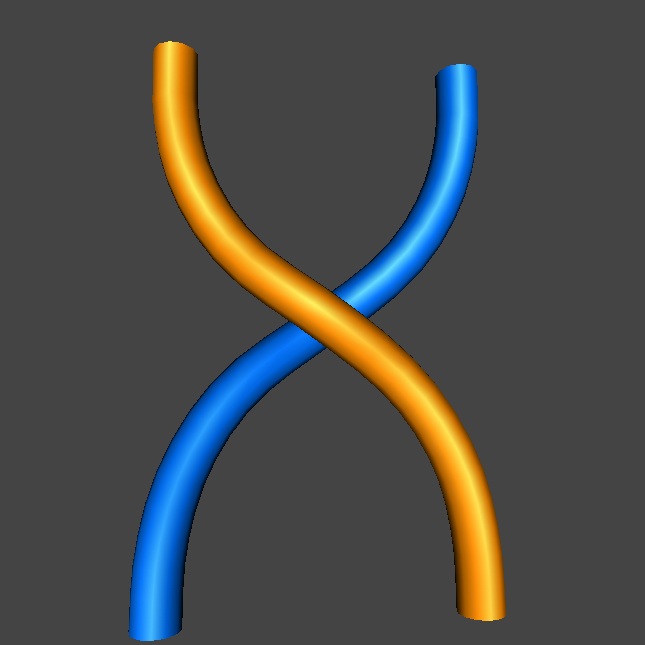
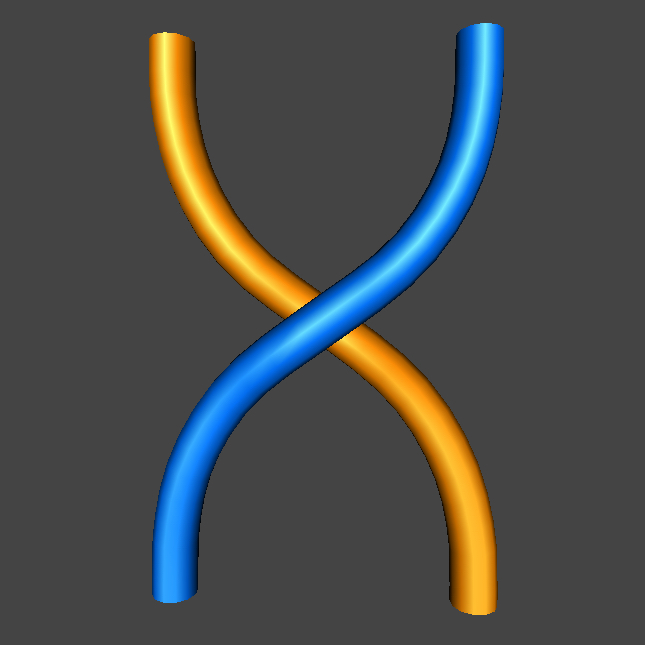
Next would be the two move possibilities on two strands: (1,2)(1,2), (2,1)(2,1), (1,2)(2,1), (2,1)(1,2).

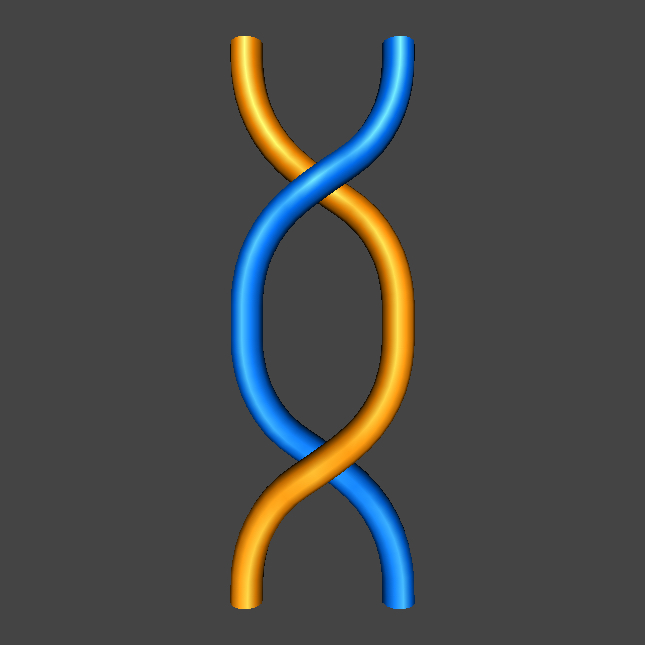

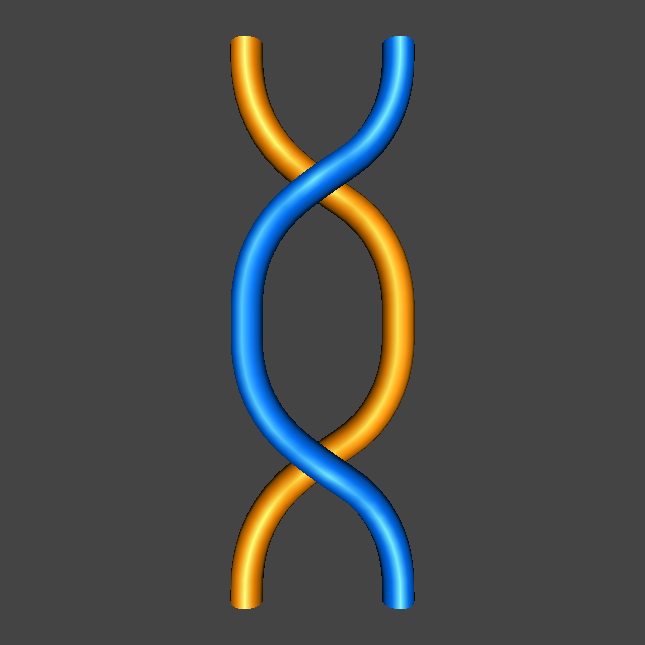
Now move to three strands, N=3. We start with M=1, these are the single moves on three strands. They are (1,2), (2,3), (2,1), (3,2). There is no (1,3) or (3,1) because a strand can only pass over one strand at a time.
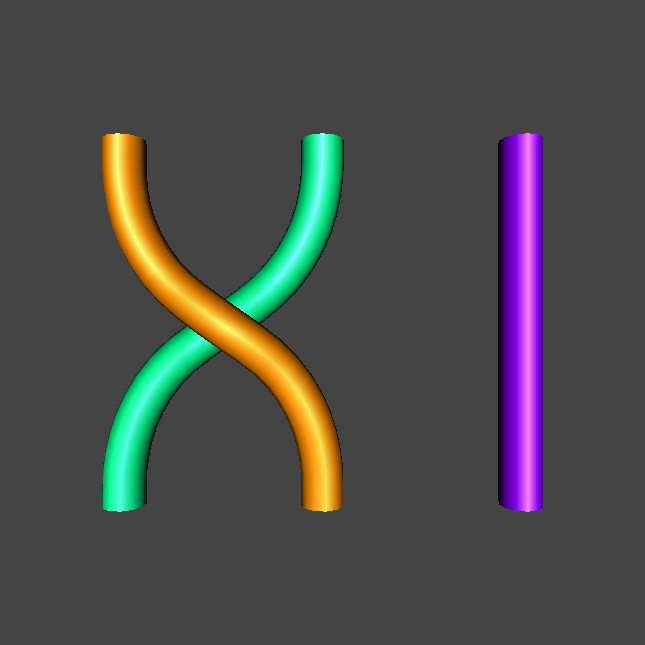
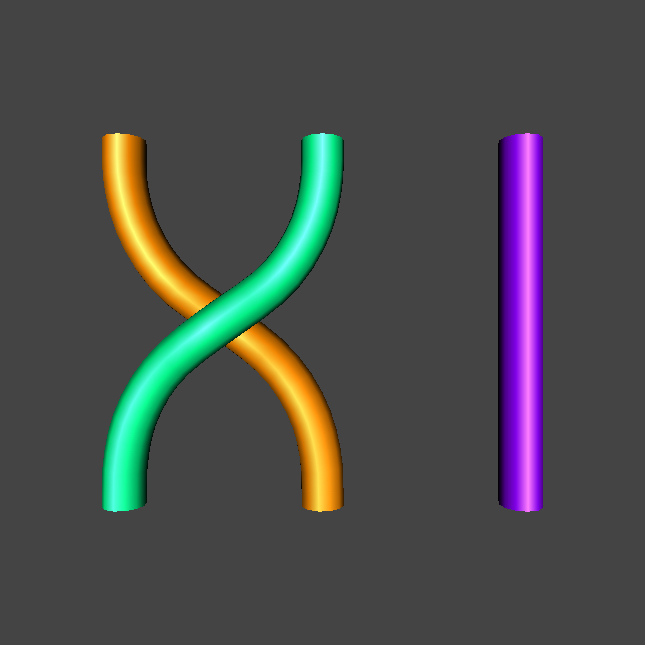


We then consider N=3, M=2, two move combinations on three strands. They are (1,2)(1,2), (2,1)(2,1), (1,2)(2,1), (2,1)(1,2), (3,2)(3,2), (2,3)(2,3), (3,2)(2,3), (2,3)(3,2), (1,2),(2,3),(1,2)(3,2),(2,3)(1,2), (2,3)(2,1), (3,2)(1,2), (3,2)(2,1). A perhaps easier way to see the pattern is to let A=(1,2), a=(2,1), B=(2,3), b=(3,2), C=(3,4), c=(4,3), and so on. Then the possible two move three strand combinations are AA aa, Aa, aA, BB, bb, Bb, bB, AB, BA, Ab bA, aB, Ba, ab, ba, sixteen in all. Depicted to the right are aa, BB, Ab, and bA, in order.
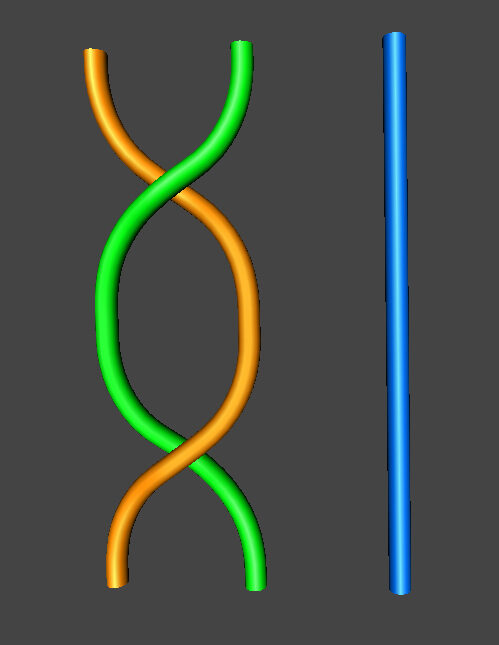
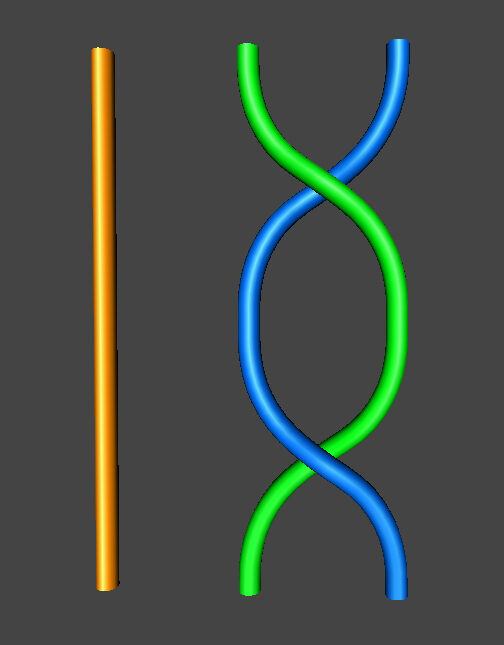
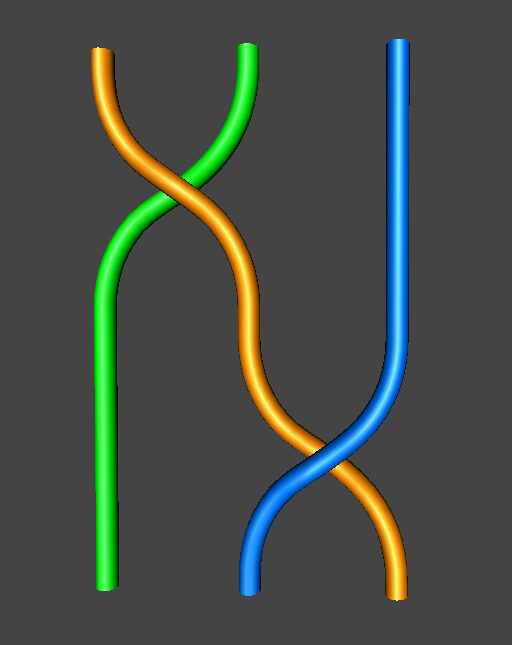
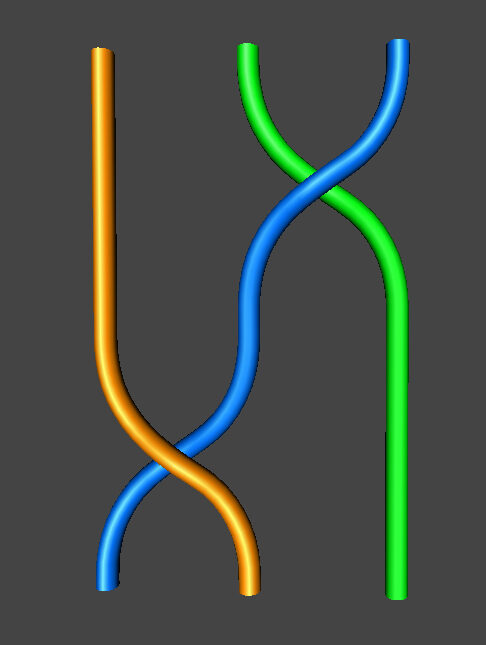
We could continue in this manner, listing all the four move possibilities for two, three, and four strands. Then all the possibilities for five moves in five strands, and so on. For five strands, the possible moves are A, a, B, b, C, c, D, d. Five moves would be given by a sequence of five letters chosen from these eight letters, with repeats allowed, for example cADDb. These sequences are called braid words. There are 8 choices for the first letter, 8 for the second, and so on, so there are 8x8x8x8x8=32,768 braid words of length 5. So the braid given by cADDb, depicted to the right, is one of more than 32,000 patterns of this length. So even though five braid moves perhaps does not seem so complex an effort, we are not going to make a list of the patterns.

One way to categorize knots and links is by crossing number. That is, we list the possibilities as the crossings increase.
A closed loop with no crossings is the unknot.
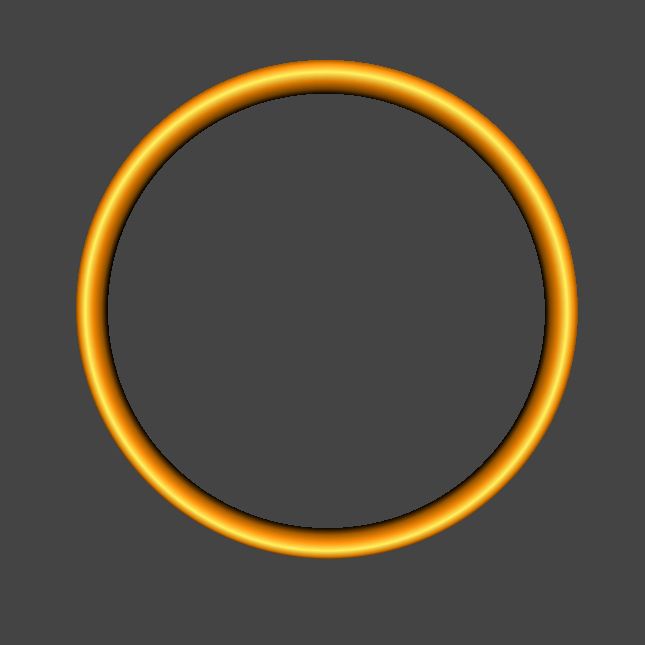
There is no knot with crossing number 1, a loop with just one crossing can always be simplified to zero crossings by a Reidemeister type 1 move. The only link with crossing number 2 is the simple link.

The trefoil is the only knot or link with crossing number 3, but of course there are right and left versions.
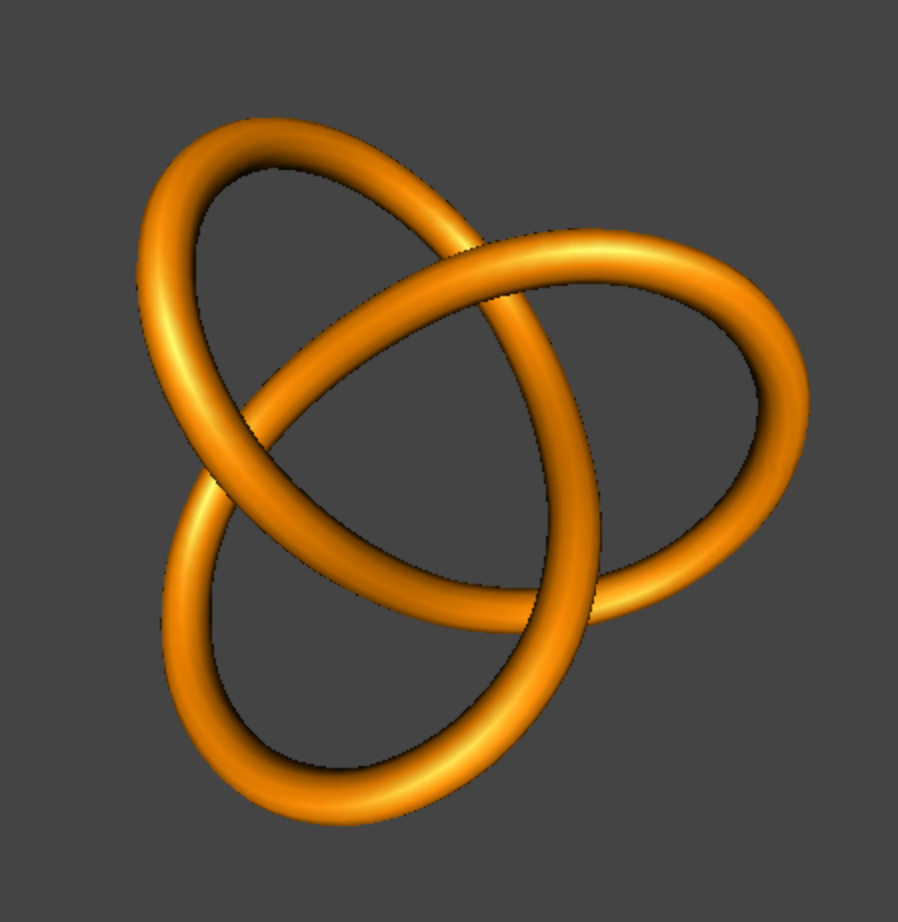
For crossing number 4, there is the figure eight knot, a link with two components and a link with three components.
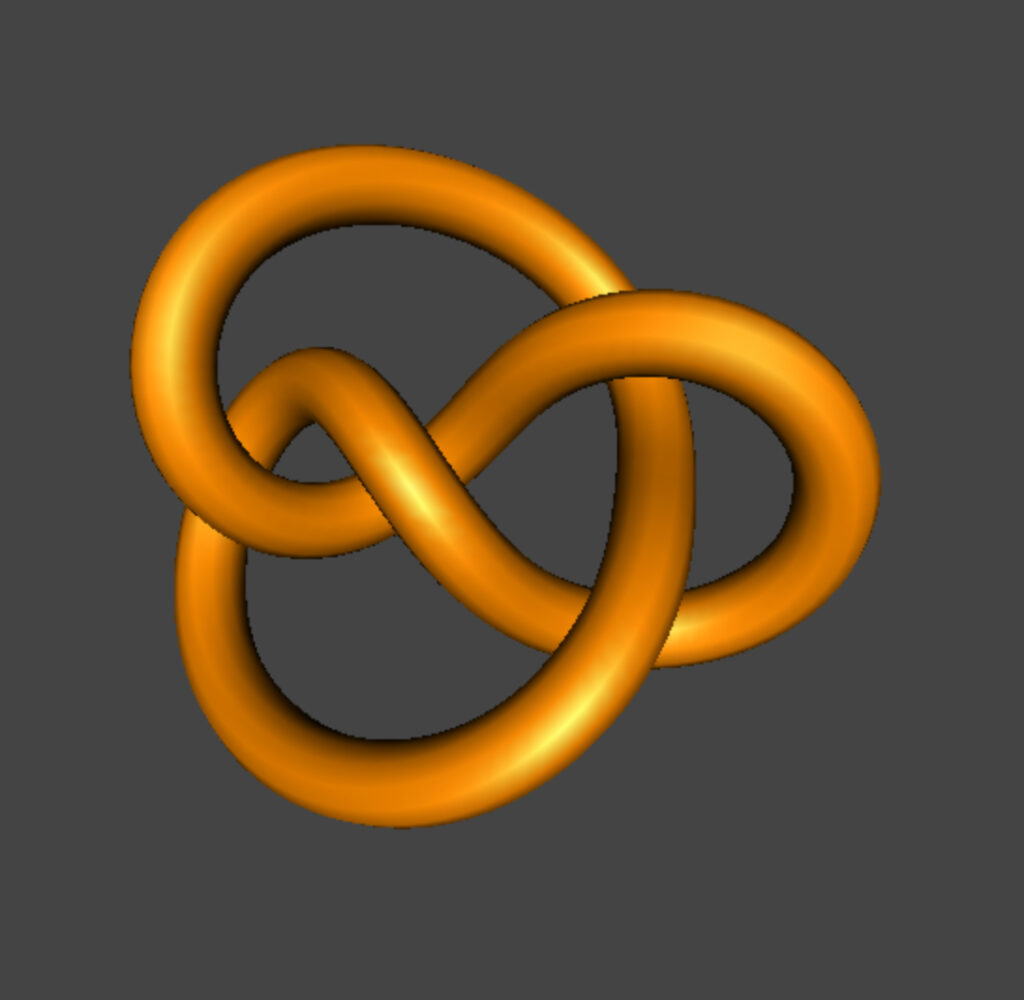
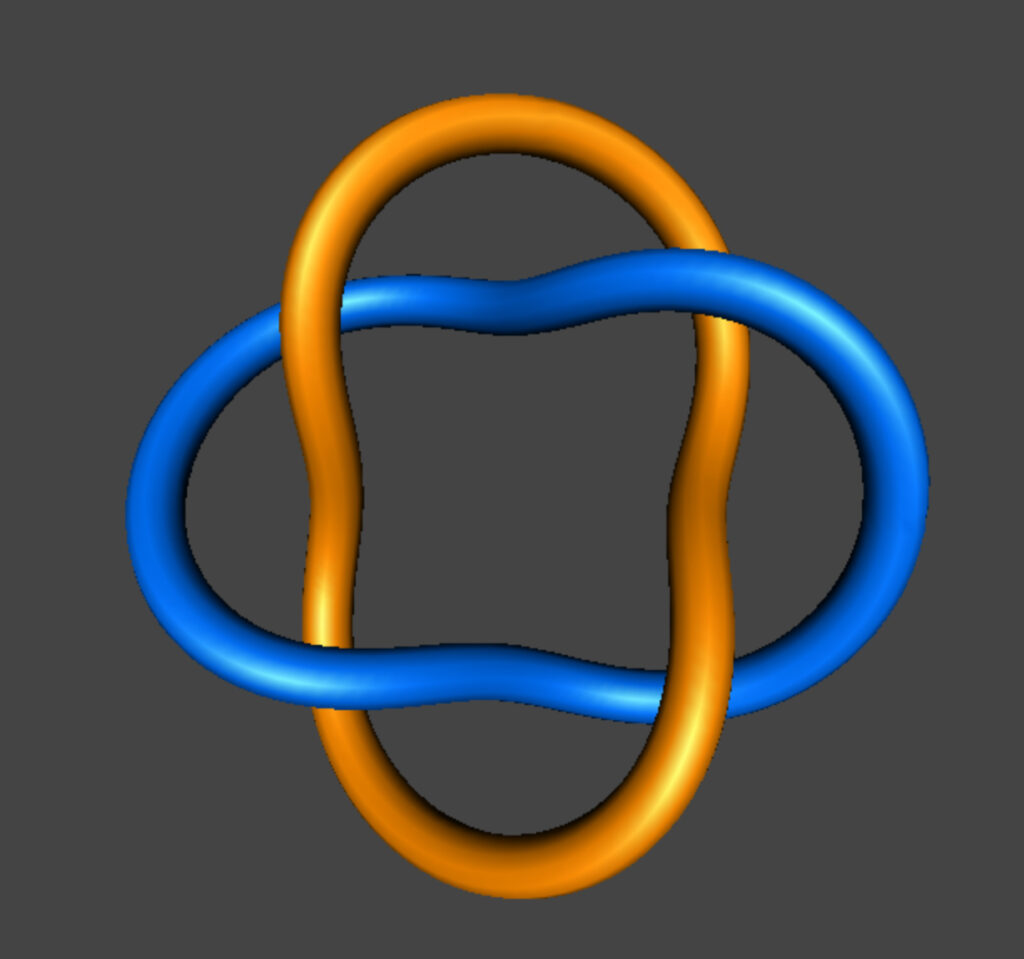
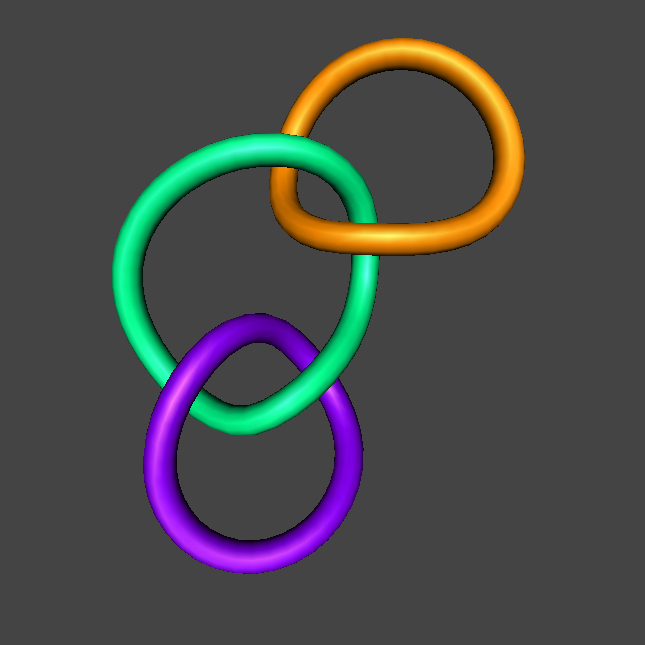
For five crossings we have the star knot (the 2,5 torus knot), the 3 twist knot, a link of two components wherein one is twisted (sometimes called the Whitehead link), and a link of the trefoil and the unknot.
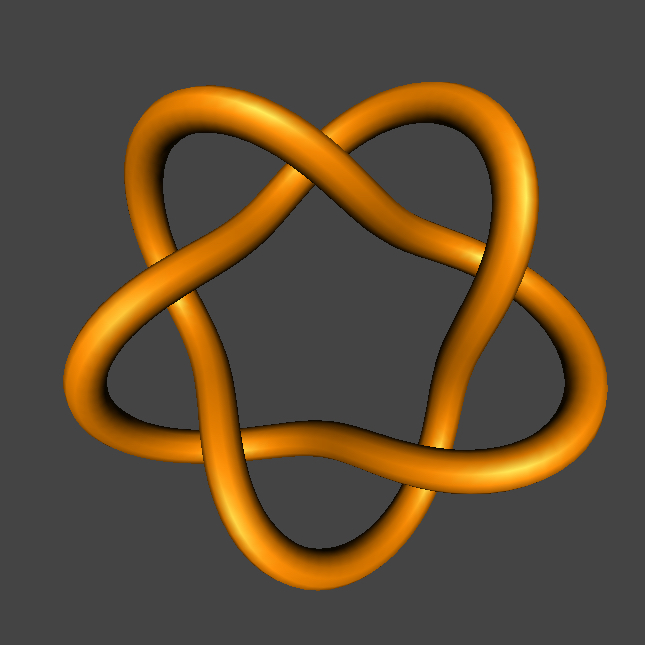
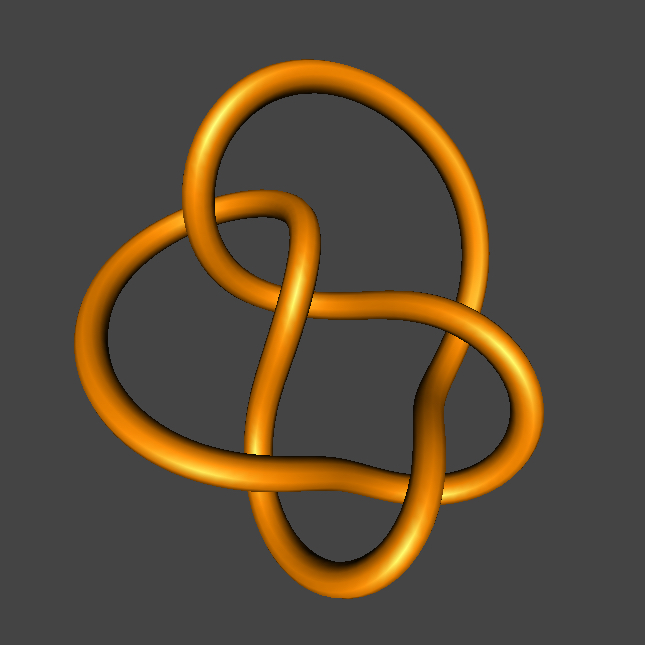
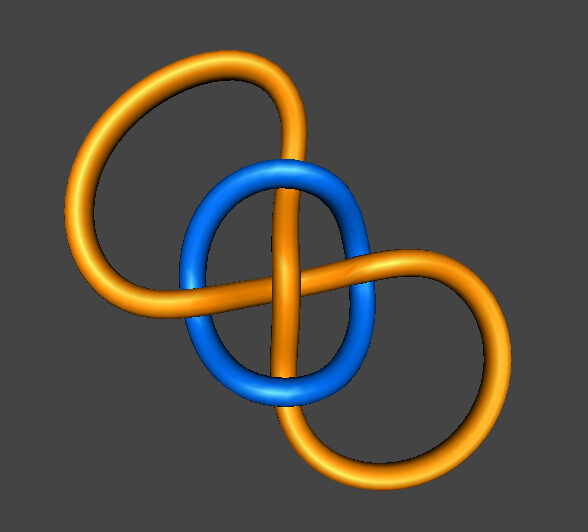
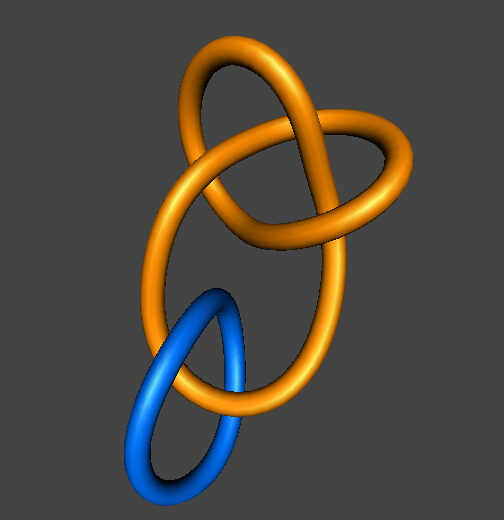
Just as with the braiding patterns, considering all the possible knotting and linking patterns by crossing number will quickly run into high numbers. The possibilities grow exponentially. However, if we focus on certain classes, we can form more reasonably-sized collections for smaller numbers. An example was table of torus knots in Chapter 7. Here is the first few in a listing of prime knots — no products, no links that are not knots.

The numbering system is that the large number is the number of crossings, and the subscript is an arbitrary listing number within that crossing number class, so the last image is the third of the prime knots with crossing number 6.
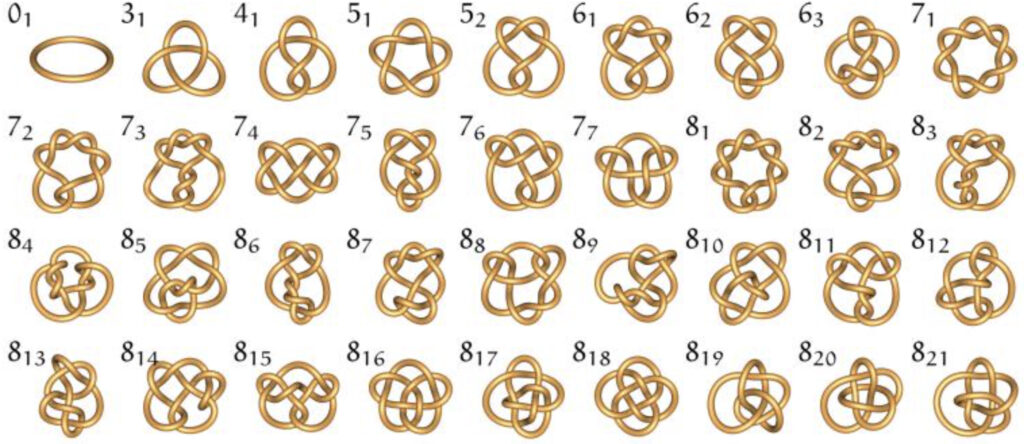
We saw at the opening of this chapter tables of practical knots. Here is a reproduction of one of the first attempts at a more mathematical table. It is a progressive table by crossing number. The table is by a mathematician named Tait. In perhaps the best wrong theory ever, the physicist William Thompson proposed that the chemical elements, were in fact knotted vortices in the aether, where the aether was supposed a sort of everywhere medium that we don’t experience, maybe like air on a day without wind. Smoke rings and tornados are vortices if you are looking for a mental image. The idea was that the different knot-types would be different elements. Tait, inspired by Thompson, created the table below as an attempt at both a mathematical knot table and the periodic table of the elements. The fact that there doesn’t seem to be any aether is unfortunate, though this theory is clearly an ancestor of string theory, if you are into that.
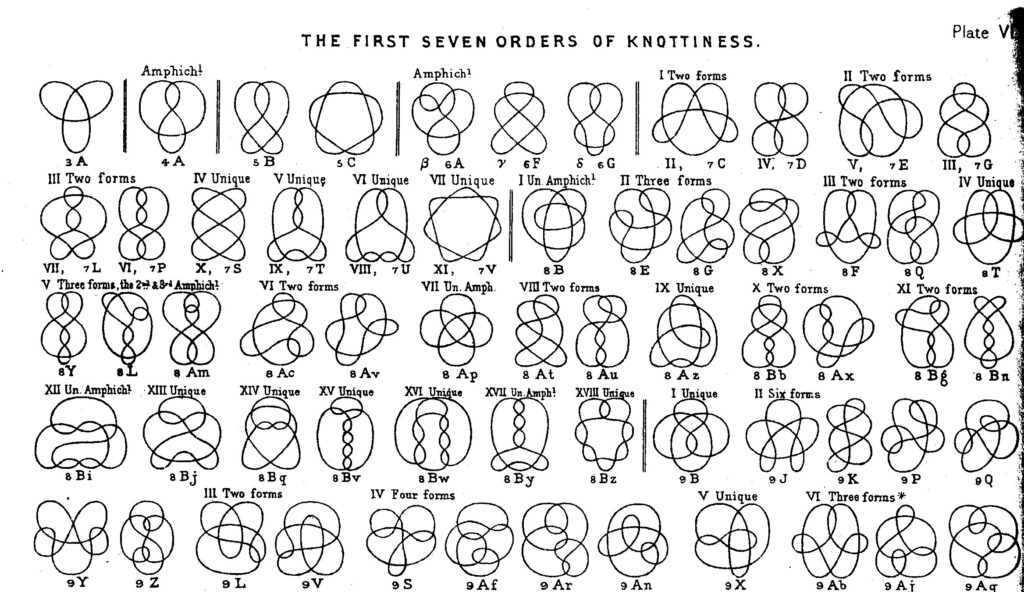
In Tait’s table, crossings are shown, but not in a way in which we can tell which strand goes over and which under. Nevertheless, we can see pretty easily the first four entries are the trefoil, the figure eight, 5sub2, and the star knot, the same ordering as in our table, except that the star knot and 5sub2 are reversed. Similarly for the three six-crossing knots. But for the seven crossing knots, the first three knots are listed as having two forms each. There does seem to be the idea of topology operating in the background, since these are labeled as two forms of the same knot. This gives us seven different knots with crossing number 7 in both Tait’s table and the modern one
We could also make a table which includes links. Below is a table of links, where each entry has at least two components.
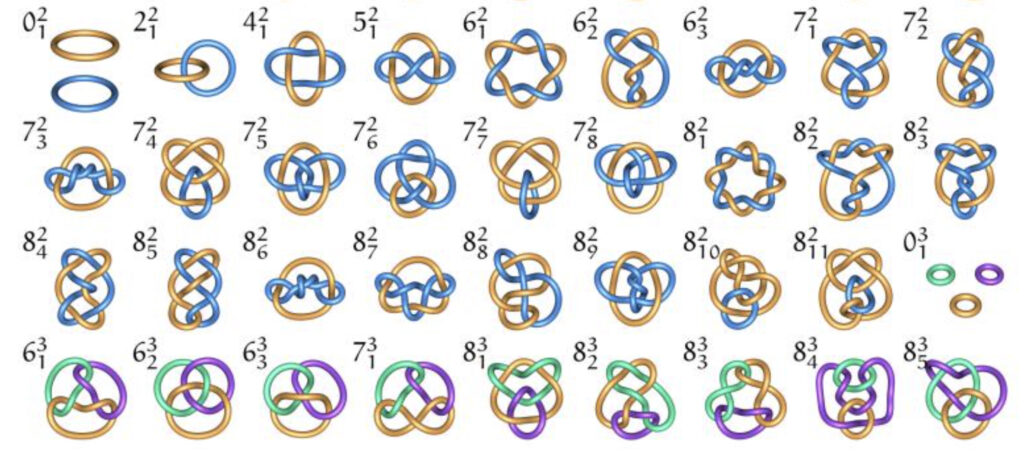
If we combined the prime knot table with the link table, we could make a table through 8 crossings with 72 entries. But we would still be missing some entries if we wanted to list all the possible topological types. One thing we haven’t considered yet is the behavior of crossing number on products. Let cr(K) be the crossing number of K, K1#K2 be the product of knot K1 and knot K2. If we consider the product of the trefoil and figure eight pictured at right, it seems like we ought to have
cr(tref # fig8) = cr(tref) + cr(fig8) = 3+4=7.
This picture doesn’t quite prove this, what it shows is that
cr(tref # fig8) ≤ 7.
We can see clearly that we can make a product without adding crossings, what we don’t know is whether making a product allows us to reduce the number of crossings. We may suspect not, but the general statement of this notion remains unproven. In any case, if we were to have a complete list of patterns with eight crossings or less, we would have to include products of two trefoils, the product of a trefoil and a figure eight, and the product of two figure eights.


We would also have to include some patterns with four and five components, some examples are to the right, perhaps the reader might want to look for others?
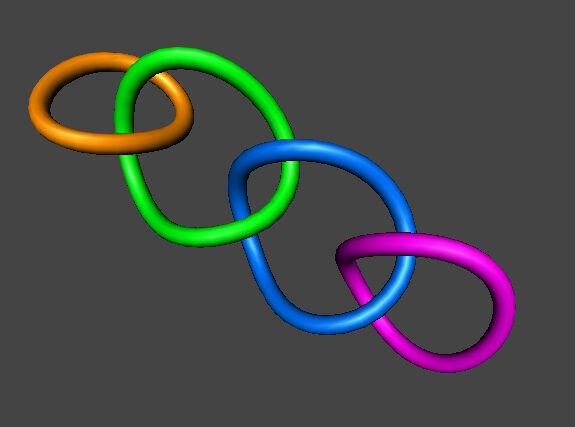


We have seen that we can create knots and links by closing braids. So we might ask which knot or link does the closure of the braid above cADDb give us? Closing a braid does not introduce new crossings, so whatever the result, it must be a knot or link with 5 crossings or less.
There are nine distinct links, including knots, of five or fewer crossings. They are depicted above, when we considered patterns of zero, two, three, four and five crossings. Let’s see which one it is.
In the sequence below, we first close the braid given by cADDb, resulting in two closed components in the fifth image. We then simplify the gold component with three successive Reidemeister type 1 moves, showing that the closed cADDb braid is the simple link.
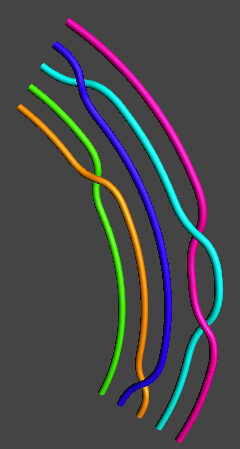
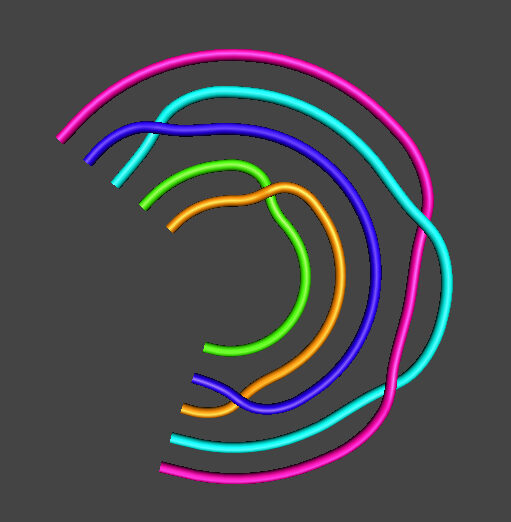
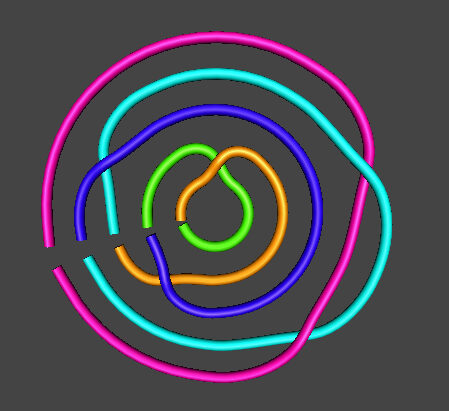
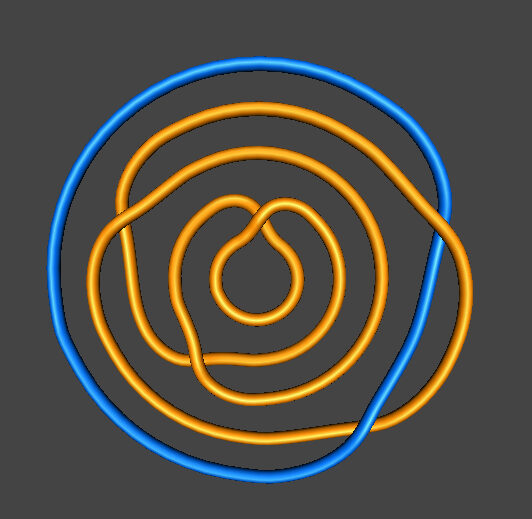
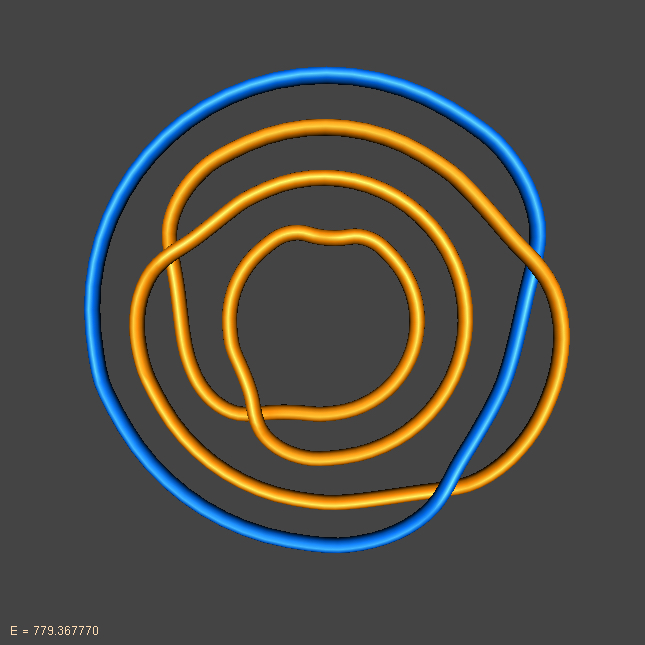

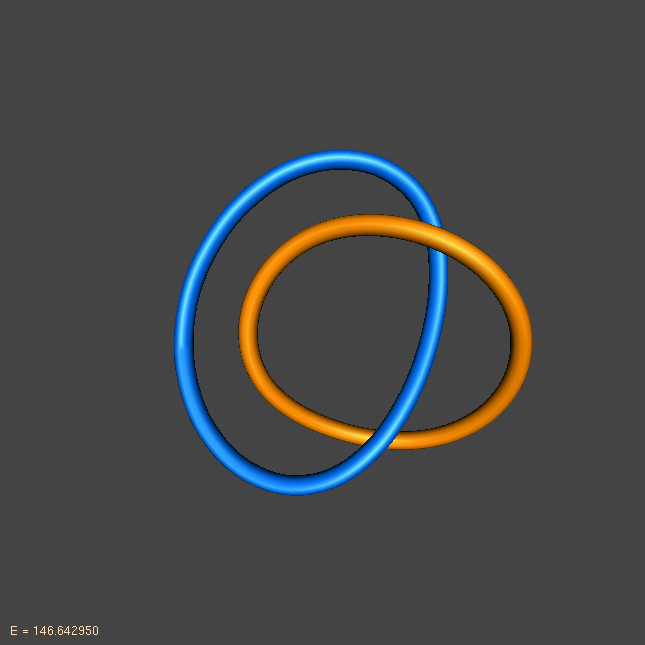









A directed diagram of a knot is a diagram with a chosen direction to walk along the knot. (There are two possible directions). As we walk along following the strand, we can ask as we go through each crossing, did we pass over or under the other strand in the crossing? If we denote over with an O and under with a U, then tracing the knot we get a sequence of these letters. For example in the trefoil diagram we get OUOUOU, six letters, since we pass through each crossing twice to complete the knot. If you can find a diagram of a knot wherein the letters alternate between O and U as they did for the trefoil, the knot is called an alternating knot. If there is no such diagram, it is a non-alternating knot.
Note that the over/under sequence does not uniquely determine the knot, for example both prime knots with crossing number 5 have sequence OUOUOUOUOU, since they are both alternating.
There is a wonderful Celtic knotting tradition in the decorative arts, which can be seen on memorial stones, wood carvings, on jewelry, illuminated manuscripts, tattoos, and elsewhere. In Celtic knotting, the tradition is to use alternating patterns, a requirement which can take some design attention. To the right are some examples of Celtic knotting patterns, two in stone, then a two component link, a three component link, then a more complex knot.
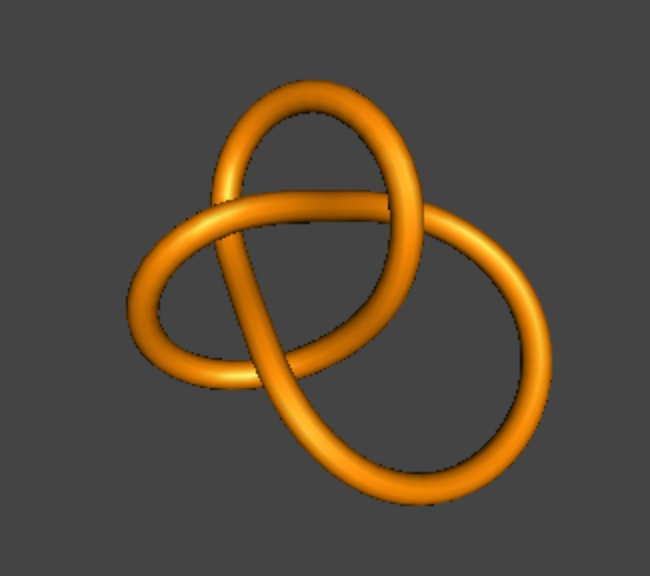
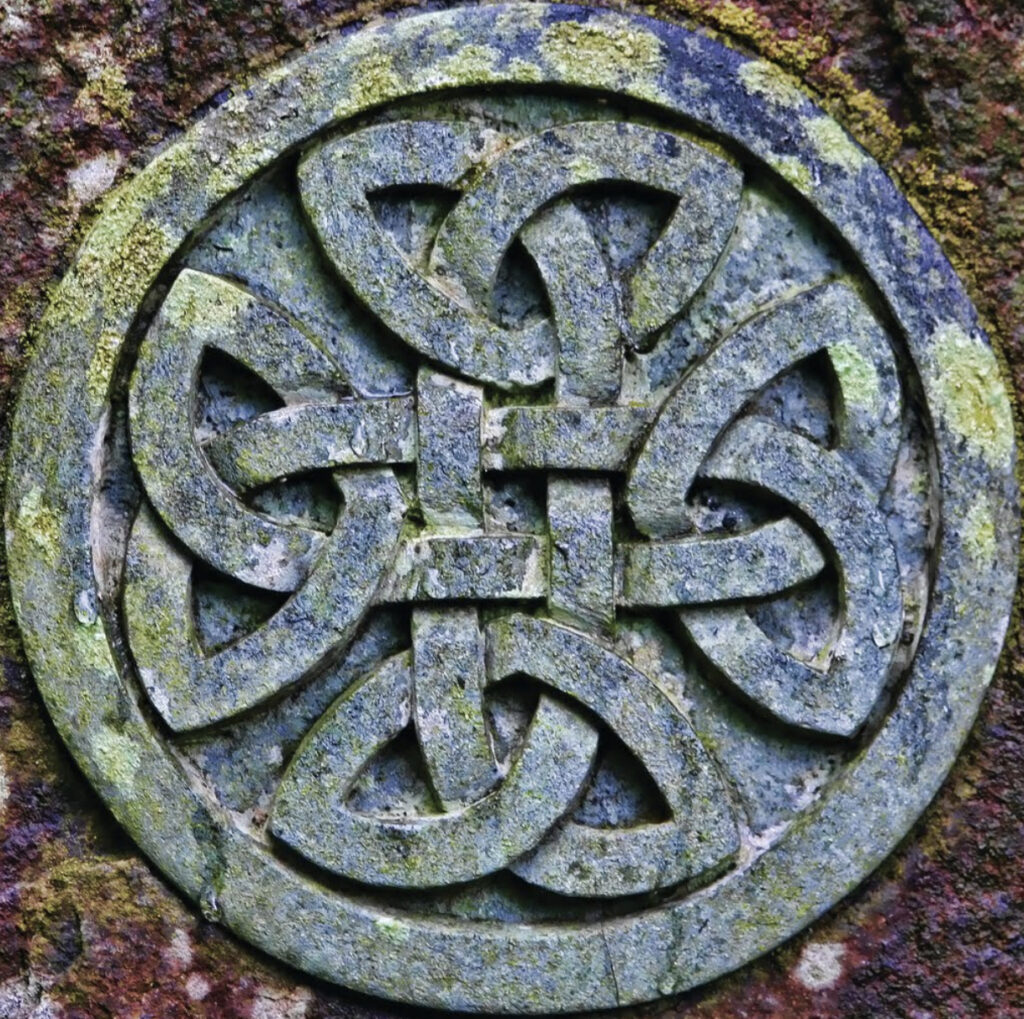
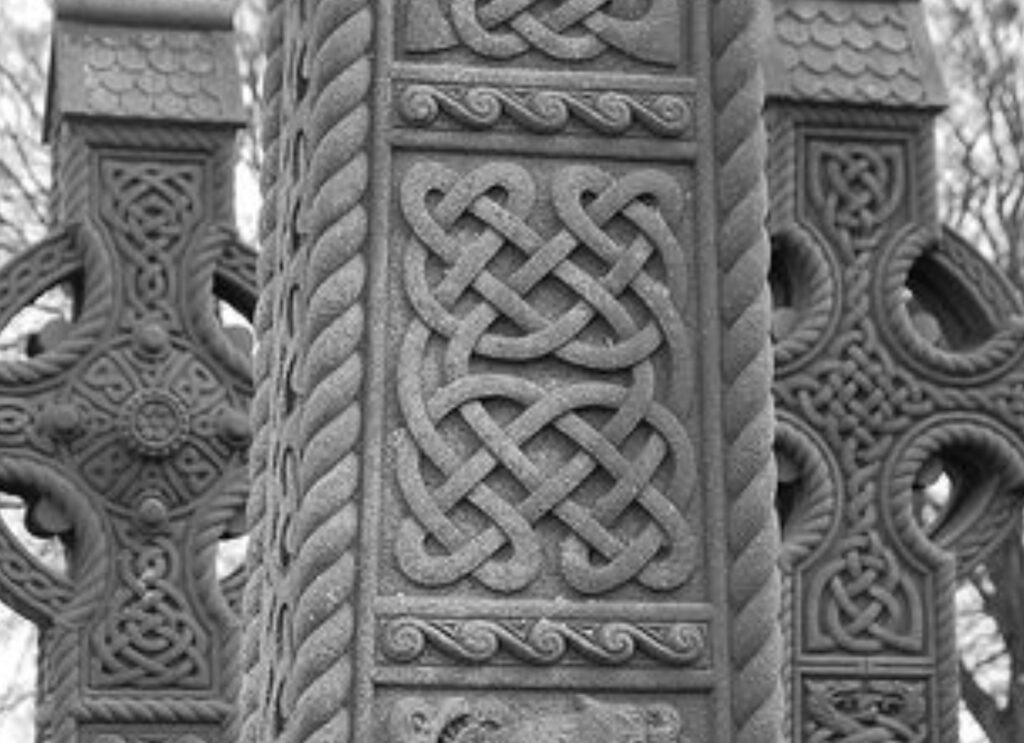
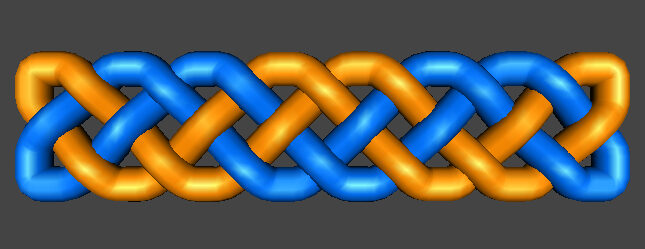

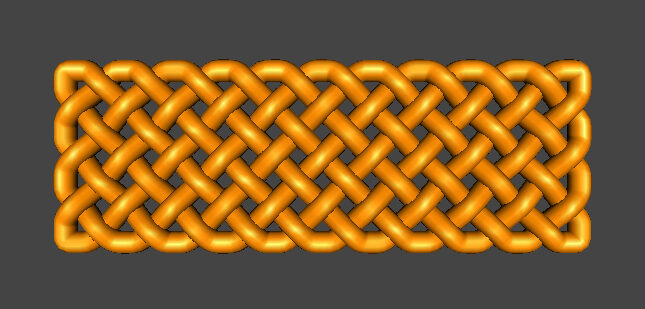
If we check the first row of the table of prime alternating knots, we find all alternating knots. Iff we check the second row, they are all alternating. If we check the third row, and this has now become a bit of a tedious task, we find all alternating as well. The first few in the fourth row are alternating, and having now checked thirty knots, we may be near the point of simply assuming that all knots are alternating. But then we arrive at 8sub19, which is pictured at right, in different position than depicted in the table. If we look at the three crossings at the top, we can see a strand with OO in its sequence and one with UU, so clearly this is not an alternating diagram. In fact no alternating diagram can be found for this knot. If we consider a pattern such as in the coaster link pattern pictured next (in Chapter 7 we saw a knot constructed in a similar way), we can imagine that there might be many non-alternating knots. In fact the ubiquity of alternatingness in the early part of the knot table is sort of a phenomenon of small numbers. Once we get to 13 crossings, more than half the knots are non-alternating. To the right is the (7,8) torus knot, which has many crossings and is clearly non-alternating in this position, and is in fact non-alternating.
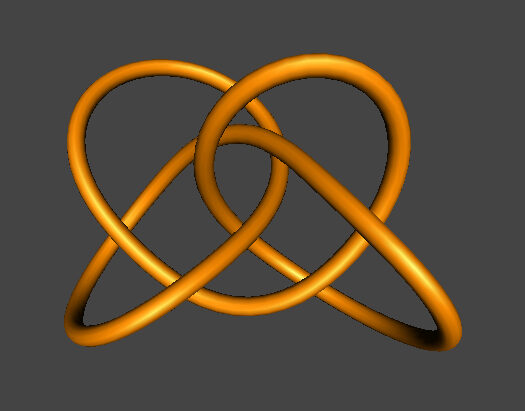
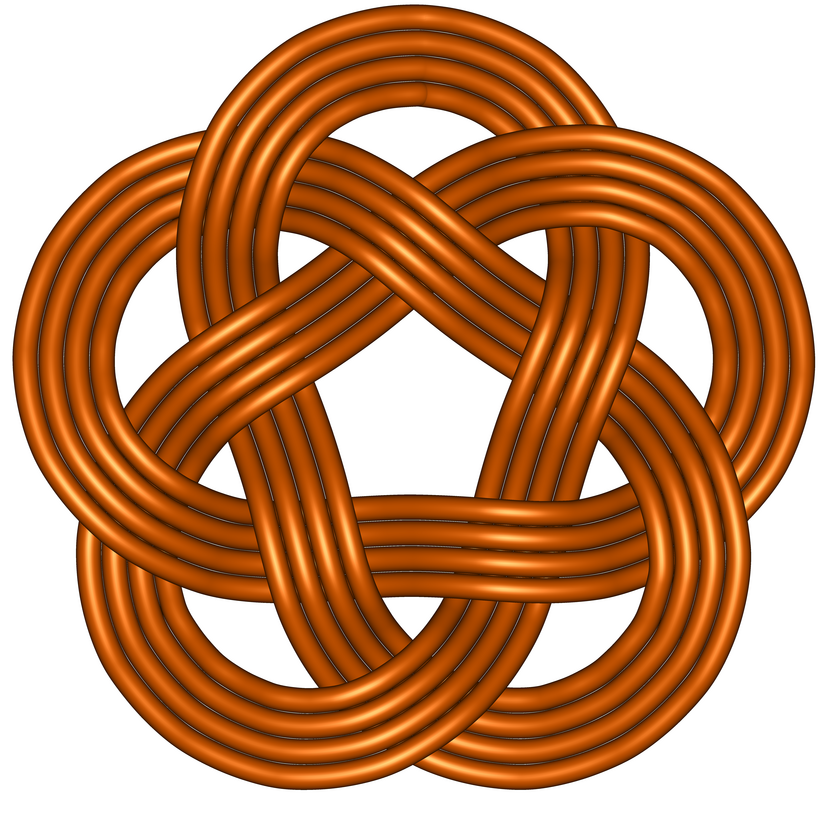
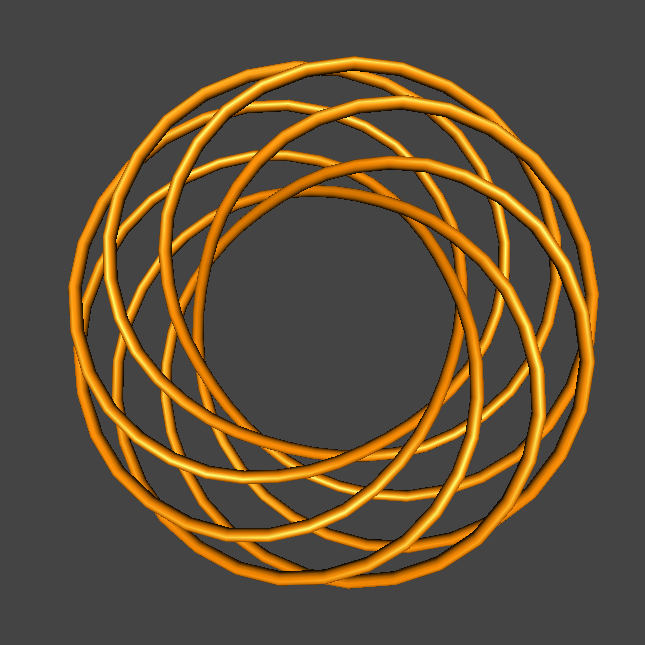
So, how many prime knots are there, for a given crossing number? The data is in this chart:
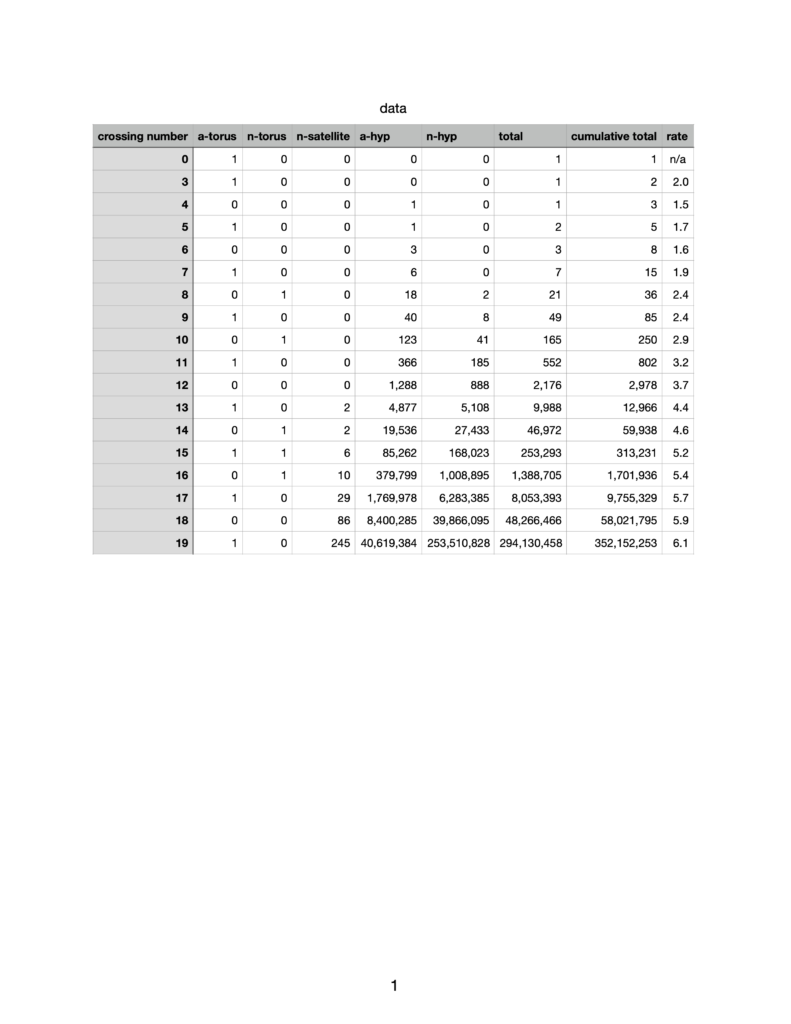
A few things can be read easily from this chart. The column headings a-torus and a-hyp stand for alternating torus knots and alternating hyperbolic knots, respectively. We have not defined hyperbolic yet. The n-torus and n-hyp are the nonalternating ones of those flavors. If you review our construction of satellite knots, you will perhaps believe that they are non-alternating.
The first thing to note is that the number of prime knots grows exponentially in crossing number. There are 21 eight crossing knots, 165 ten crossing knots, and 294,130,458 nineteen crossing knots. Second, the alternating knots are a diminishing percentage of the total, though even at nineteen crossings there are still over 40 million of them.